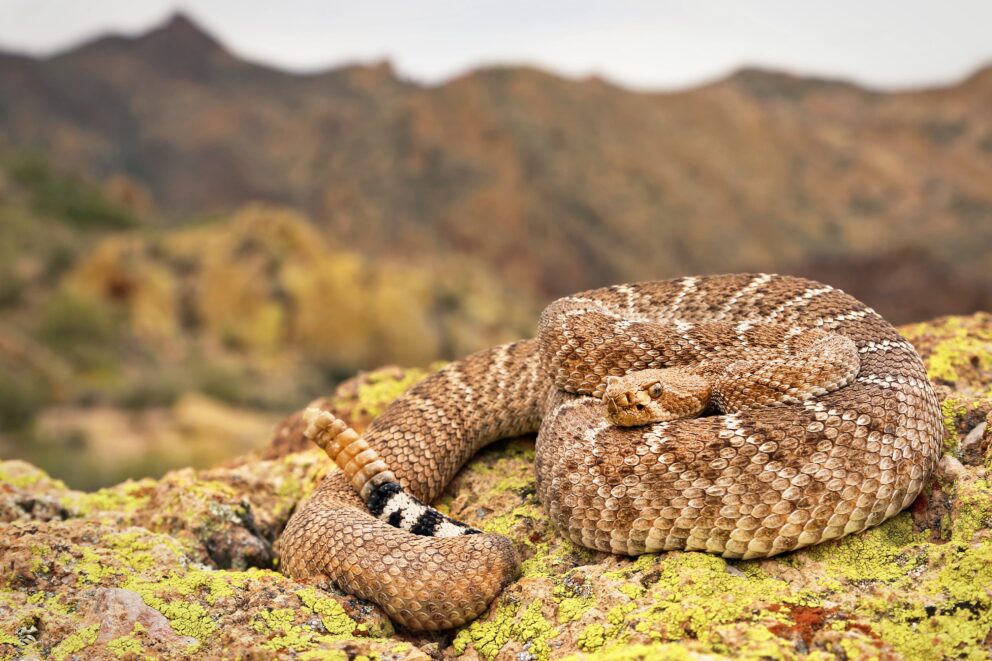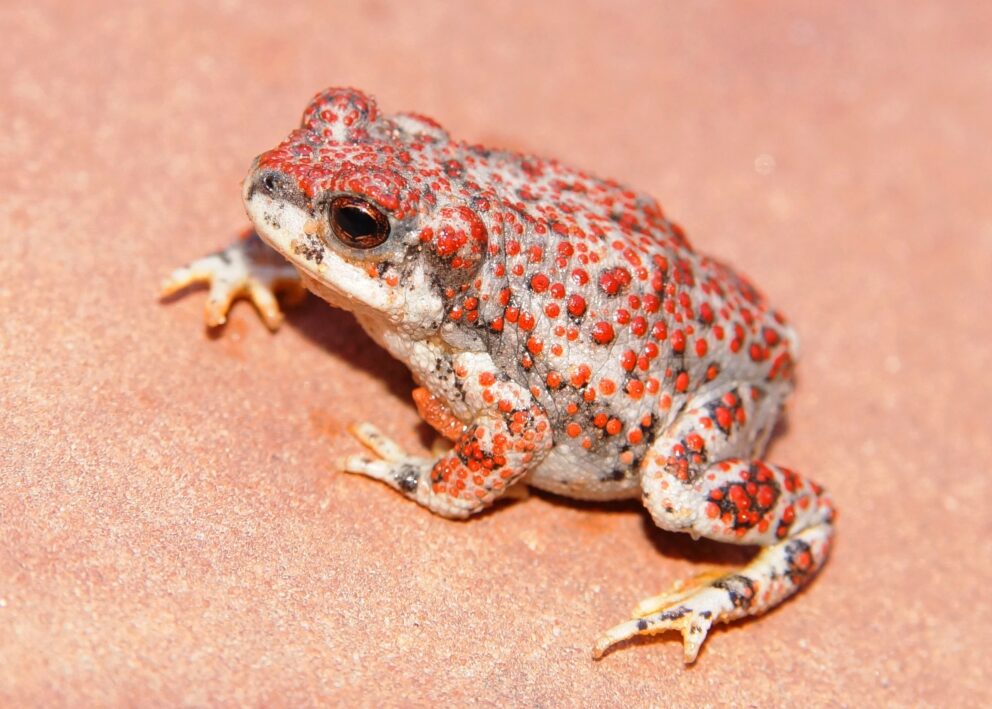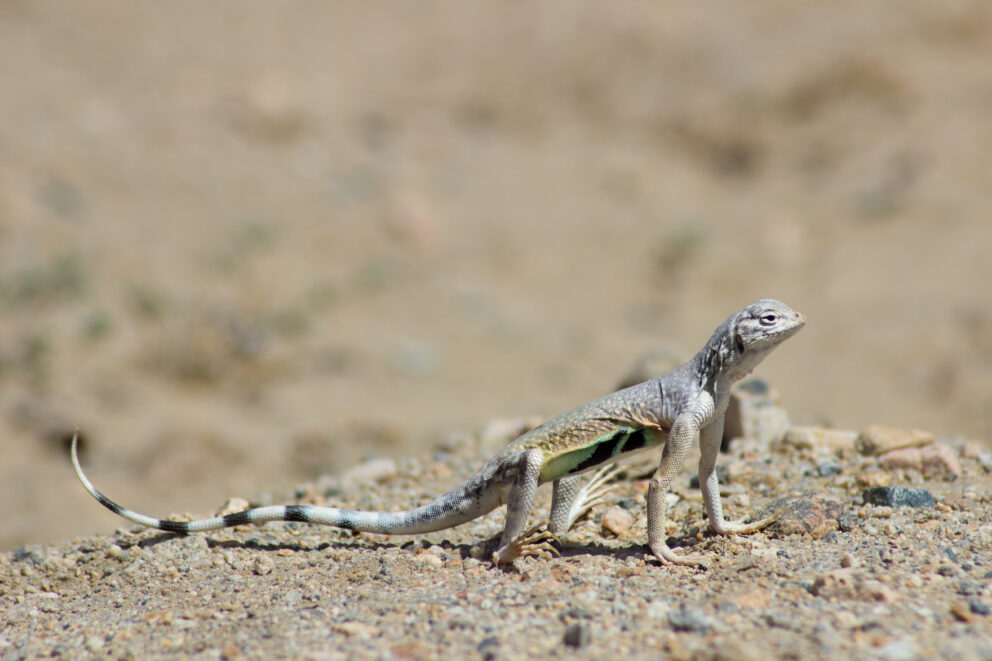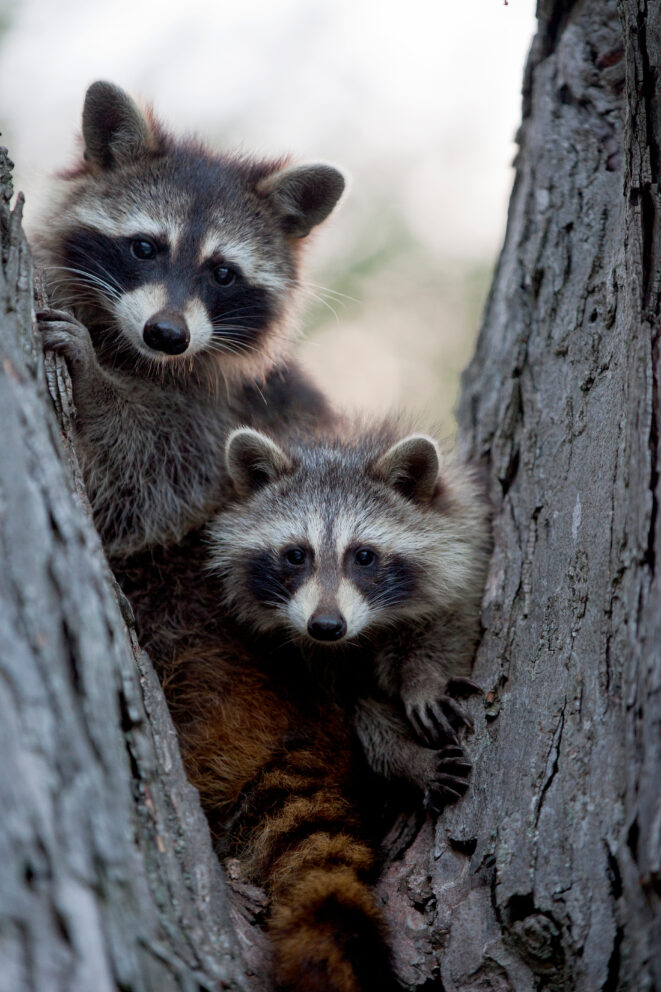- SCIENTIFIC NAME
- Crotalus atrox
- CLASSIFICATION
- Reptile
- LIFE SPAN
- 10-20 Years
- STATE CONSERVATION STATUS
-
- Unprotected
- FEDERAL CONSERVATION STATUS
- Least Concern
- GAME STATUS
- Non-Game
- Washoe
- Humboldt
- Pershing
- Churchill
- Mineral
- Lyon
- Douglas
- Carson City
- Storey
- Elko
- Lander
- Eureka
- White Pine
- Esmeralda
- Nye
- Lincoln
- Clark
Habitat & Range
The Western Diamondback Rattlesnake is found in the very southern tip of Nevada. They call the Mojave Desert home and can occupy a range of habitats such as rocky areas in desert washes, rocky hillsides, and grassy areas.
- Desert Washes
- Grasslands
- Mojave desert
Threats
- Habitat Destruction
Natural History
The Western Diamondback Rattlesnake is venomous. That venom is used to subdue their prey which are primarily small mammals and sometimes birds. They are ambush predators that wait for their prey to come to them before striking and swallowing their prey whole. Snakes do not need to eat often and will consume food once every two to three weeks.
Rattlesnakes are not born with their rattles, but every time they shed their skin a little piece is left on their tail adding a new ‘button’ and making their rattle bigger. You can not age a snake accurately by the ‘buttons’ on their rattle because they can shed more than once a year. The rattle serves as a warning to predators, and sometimes humans, to stay away. Even with their potent venom Western Diamondback Rattlesnakes have predators including coyotes, kingsnakes, birds of prey, roadrunners, and even stock animals can trample them.
These snakes reach sexual maturity at the age of 3. Like other rattlesnakes, they give birth to live young. Litters consist of around 10-15 young.













